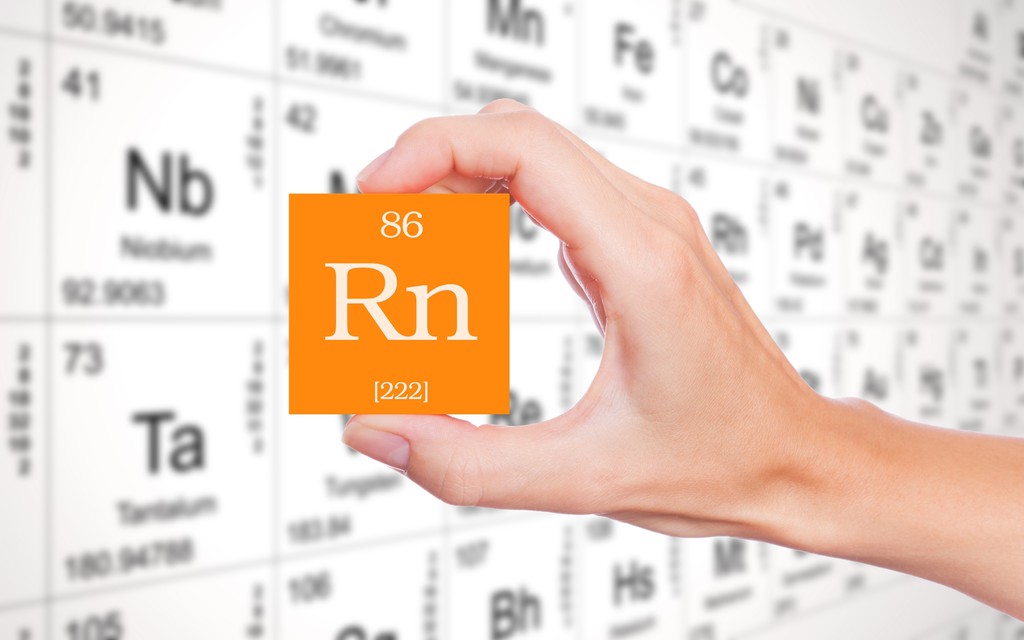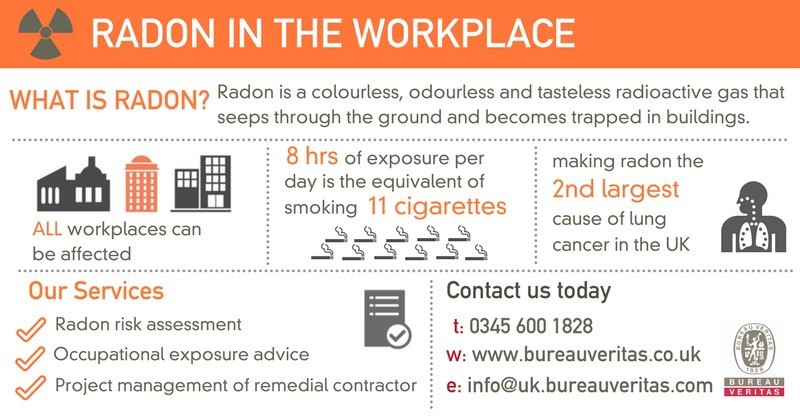
Kelly Rose
Editor

Kelly Rose
Editor
Upcoming changes to the Ionising Radiation Regulations 1999 (IRR1999) will no doubt put radon on the radar for many businesses, as the UK looks to reduce the maximum levels of radon permissible in the workplace. With the Health & Safety Executive (HSE) also planning to overhaul how organisations notify the watchdog of unsafe levels of exposure, Ian Mitchell, principal consultant – radon at Bureau Veritas, examines the potential impact of the reforms and why companies must act now to comply with
From February 2018, the UK will bring in new measures that reduce the maximum level of radon exposure allowed in the workplace, with the HSE creating a new registration and licensing system for companies to manage such risk.
This means companies will need to seek remediation as a first point of call and will only be required to notify HSE once remediation shows that levels cannot be reduced below the new 300Bq/m3 limit.
New lower limit
The measures are aimed at raising awareness of radon exposure, the second leading cause of lung cancer, as well as harmonising regulations across Europe. Planned changes to the Ionising Radiation Regulations 1999 (IRR1999) are due to be implemented under the EU Basic Safety Standards Directive (BSSD) and will remain in force post-Brexit.
It will mean workplaces will have to adhere to a new lower radon exposure limit of 300Bq/M3. This is in line with World Health Organisation recommendations and will replace the current 400Bq/M3 maximum exposure levels.
The current guidelines for radon risk assessments will also be replaced with a new ‘graded approach’, where companies will need to register with the HSE and apply for a license depending on risk levels.
What is radon exposure?
Radon is a radioactive, colourless, odourless gas that is naturally present at low levels outdoors but can build up to high concentrations inside some UK buildings. Radon decays to produce a series of by-products, such as Polonium, which emits radioactive particles that are dangerous to humans when inhaled. They damage the lung cells and have long-been recognised as the cause of up to 2000 fatal cancers per year and the third leading cause of premature deaths in the UK.
Levels of radon gas vary across the UK depending on location and building type. The risk of radon exposure in a building increases dramatically if an employee’s workplace is in a geographic area of high radon activity such as Wales and Cornwall where the nature of the underlying bedrock means some buildings have recorded the highest readings to date.
Workplaces including basements and lower ground floors are more at greater risk due to poorer ventilation, with radon being more likely to enter the building from multiple surfaces in contact with the ground. As such, the risk is higher in densely populated cities as there is greater demand for office spaces based in lower ground rooms.
Changing regulations
Under existing legislation, such as the Health and Safety at Work Act 1974 and the Management of Health and Safety at Work Regulations 1999, all organisations are required to carry out a radon risk assessment. UK workplaces located on below ground floors or in an area of high radon activity, and that are occupied greater than an average of an hour per week or 52 hours per year - must carry out testing as part of the radon risk assessment.
Workplaces in areas where it is estimated that more than 1% of properties will be affected by high levels of radon - as defined by Public Health England’s UK radon heat map - must also carry out an assessment.
Where radon workplace levels exceed the current recommended workplace limit of 400Bq/M3, employers are required to notify the HSE and implement an active remediation programme. However, once the new regulations come into force, the HSE ‘graded approach’ system will see the introduction of a new three tiered risk-based system of regulatory control based on notification, registration, and licensing.
As a result, organisations will need to pursue testing and remediation in the first instance and will only be required to notify HSE once remediation shows that levels cannot be reduced below the new 300Bq/m3 limit. In addition, the higher the radiation protection risk associated with the workplace, the greater the requirements HSE will put in place. Permission will be granted to duty-holders for higher risk activities through registration and licensing.
Time to act now
According to the UK Radon Association, a not-for-profit body promoting radon awareness, it is hoped the new regulations will raise the profile of the harmful effects of radon in the workplace and increase the safety measures for tackling this.
Given the overhaul of the current system, managing radon exposure should be a key concern for organisations, especially as radon levels can be more accurately monitored during the winter months, making it an ideal time for businesses to consider assessing the risk in the workplace and implementing appropriate remediation solutions.
How is radon measured and reduced?
As radon levels can vary and need to be regularly assessed depending on the results of an individual risk assessment – repeat testing is required for workplaces currently exceeding exposure limits while every 10 years for lower risk environments. It’s common for the majority of workplaces to be assessed every year. To measure radon in the workplace, an independent testing body will install specialist radon detectors or digital monitors for a three month test period, in order to establish average radon levels. If unacceptable levels of exposure is detected, a remediation programme is put in place including a radon ‘sump’ that can be installed beneath the building, which collects radon particles and redistributes outdoors via a connecting pipe.
It’s crucial that employers communicate a radon remediation strategy with all employees to ensure they are aware of the measures put in place and to encourage compliance and, ultimately, the success of the programme.
Overall, the move to update existing legislation on radiation is welcomed, especially as figures show radon exposure accounts for around 50% of the average person in the UK’s annual personal radiation dose – with a significant proportion of an employee’s daily exposure occurring in the workplace. For organisations looking to achieve regulatory compliance, clearly then the time to act is now.



Great Guildford House
30 Great Guildford Street
London
SE1 0ES
UNITED KINGDOM
0207 9026100